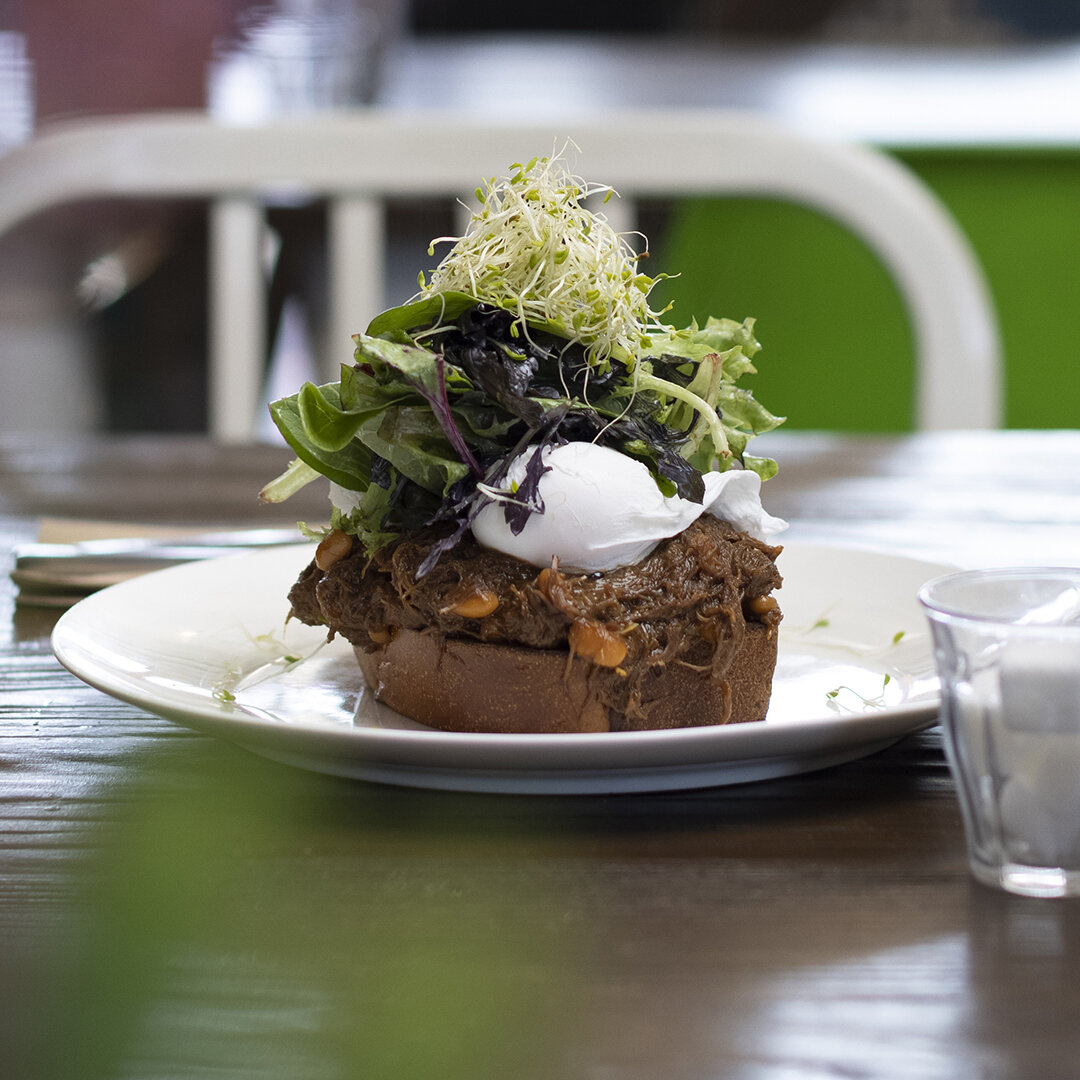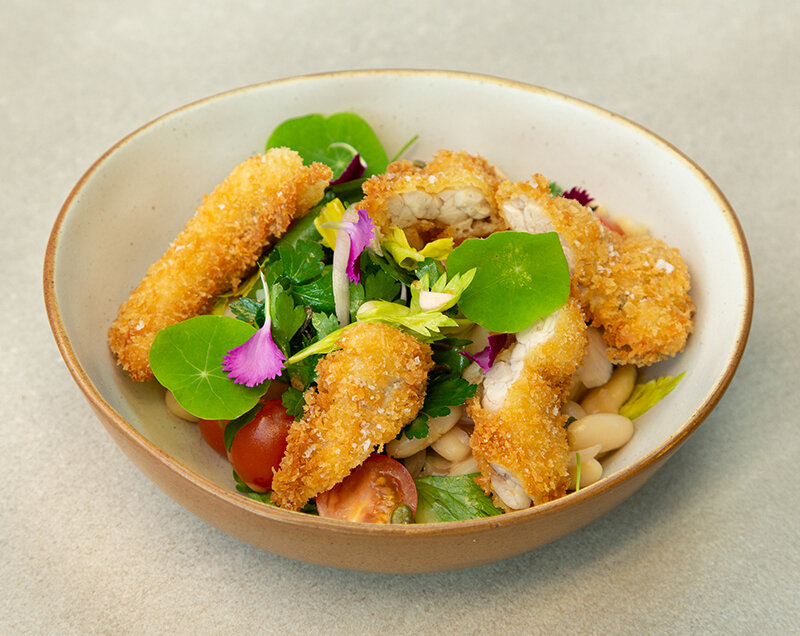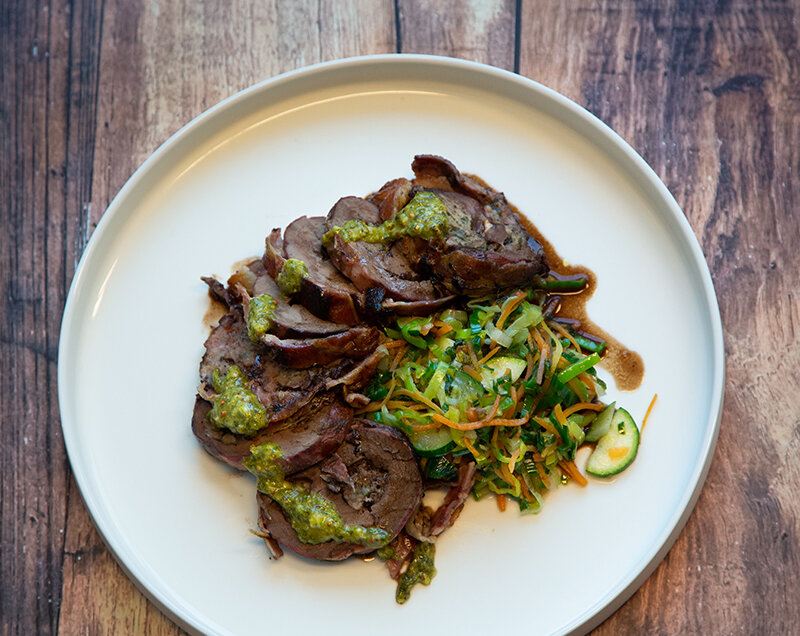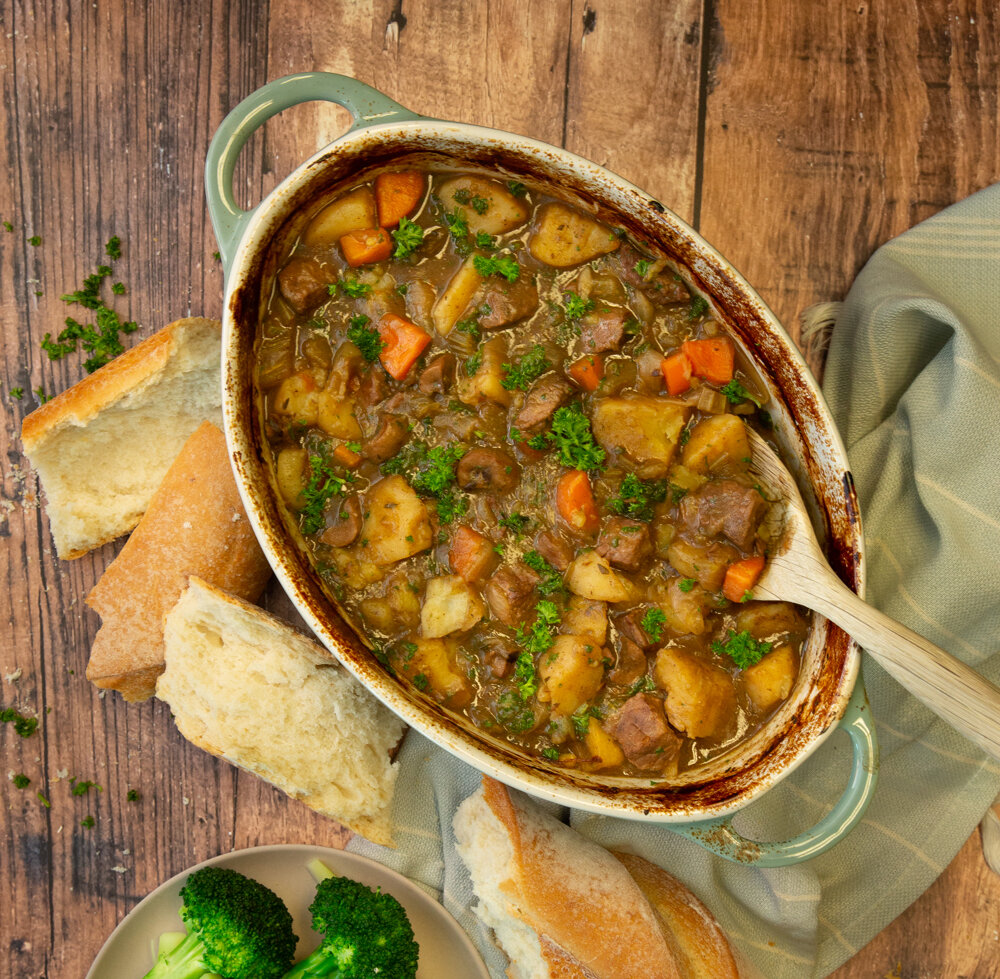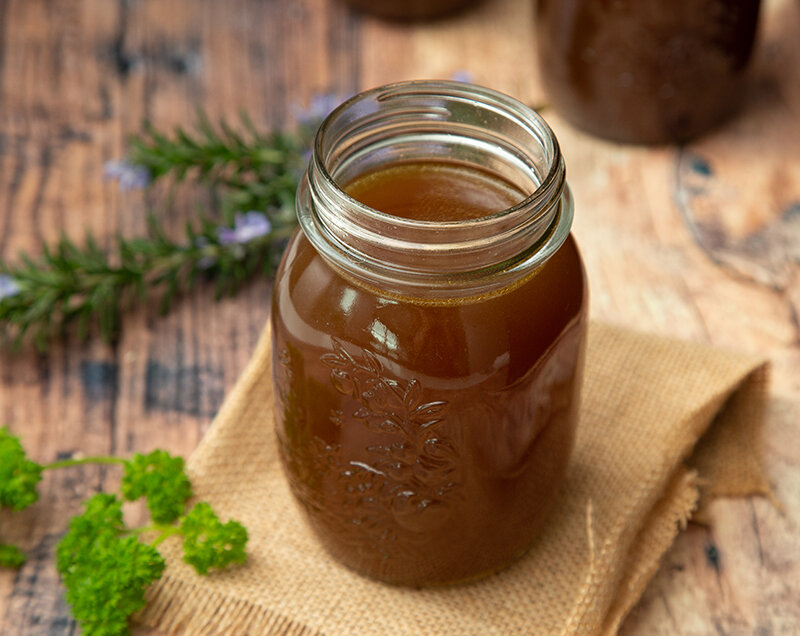Nose-to-tail is about eating all edible parts of the animal, from the head to the tail, in an effort to minimise waste, eat thoughtfully, celebrate food, and ensure that the animal is appreciated and given the respect that it deserves.
background
“This is a celebration of cuts of meat, innards, and extremities that are more often forgotten or discarded in today’s kitchen; it would seem disingenuous to the animal not to make the most of the whole beast: there is a set of delights, textural and flavorsome, which lie beyond the fillet.”
Fergus Henderson
While nose-to-tail eating has become increasingly trendy in New Zealand, with non-traditional cuts of meat popping up on menus from Whangarei to Waikawa, there’s nothing new about this culinary trend. For many, nose-to-tail eating has become popularised by chefs like Fergus Henderson and the late Anthony Bourdain, however, this isn’t a new idea. In our grandparents’ generation all parts of an animal were valued and eating liver was as normal as eating mince. In other cultures, animal parts which we scorn are highly prized – in Chinese food culture chicken feet are a delicacy, while the Scots love their haggis and Italians are passionate about tripe!
Likewise, here in New Zealand, nose-to-tail eating has been a staple of Kiwi cuisine, whether it be steak and kidney pie, to lambs fry and bacon, or liver pâté. And for good reason. Offal in particular is inexpensive, highly nutritious, and easy to source. But nose-to-tail eating is about so much more than just a cost-saving or finding something “adventurous to eat”. It’s a food philosophy that celebrates food and the exploration of culinary possibilities, as well as being a reproach of wastefulness. We think too much food goes to waste - food belongs on our plates not the bin - and by using the whole animal, we are eating more thoughtfully and sustainably while ensuring that the animal is fully appreciated.
You can learn more about the history of Nose-to-Tail eating in New Zealand here.
a beginners guide to nose-to-tail
“Fundamentally there is no magical difference between any different cut of meat. With offal there are textural and flavour differences (that can actually be preferable depending on how they are used) and it is only people’s pre-conceived ideas about what is “good” and “bad” that stops people from even trying things that aren’t normal.”
MacLean Fraser
Embracing nose-to-tail eating can be daunting for some. Heart, liver, tripe, tongue… there are so many options on offer when it comes to choosing what to eat or cook. Here’s a quick guide to easing yourself into offal.
EAT FRESH
While you can freeze offal for up to 3 months, it’s important to know that it deteriorates much faster than other cuts of meat such as steak. To ensure it is as fresh as possible, eat it on the day that you buy it if you can. It should look glistening and wet (not slimy) and stand firm and proud. Dry, cracked or bad-smelling offal should be discarded.
GO PIECE BY PIECE
Start by experimenting with one or two dishes using lesser-known cuts like tongue or cheek before taking on something more complex (such as roasting a whole animal).
BUILD A CHARCUTERIE PLATE
Look for local and artisanal sausages, pâtés or terrines and serve with an assortment of pickles, radishes, dried fruits and nuts.
IF IN DOUBT, EAT OUT
A lot of Kiwi chefs are doing great things with offal, so if you’re not sure you will like the taste of it, then it might be best to try it at a restaurant first. Offal can be found on many menus and ordering it in a restaurant is a great place to get your first introduction – it will be cooked to perfection and paired with flavours that will really complement the dish.
GET TIPS FROM THE PROS
Talk with you local butcher about what they have on offer and how they typically prepare a dish.
DISGUISE IT
If the look of offal is putting friends or family off from trying it, you can overcome this by starting with something like pâté. Although pâté is made from livers, it is delicious and smooth, and most people don’t even associate it as offal. Likewise, a steak and kidney pie is a great alternative.
IT’S EASIER TO FIND THAN YOU THINK
While you may not be familiar with buying offal, most supermarkets will offer it pre-packaged in the meat aisle, while your local butcher should also have it on hand. Liver and kidneys are probably the most widely available offal and are as simple to cook as a steak, but far less expensive. For a milder tasting offal, look for heart, sweetbreads or tripe. It isn't always easy to find brains, hearts, and tails as supermarkets rarely sell the more challenging cuts. Making friends with your butcher is probably your best bet for securing fresh offal and also ask at farm shops or small producers (you may need to order in advance).
MIX IT WITH MINCE
Like the above suggestion, another way to dip your toe into offal eating is by adding a small amount of ground offal to mince. Mince is incredibly versatile, works well with a variety of flavours, and can easily disguise the offal. We recommend a 30-70 split of offal to mince. The mixture can then be turned into more recognisable meals like burgers, meatloaf, or meatballs. Liver, kidney, tongue and heart work well with beef mince, and will greatly increase its nutritious value.
DON’T KNOCK IT TILL YOU TRY IT
The easiest way to know whether you’ll love offal is to simply just give it a go. One of the great things about food is the chance to experiment. We all have different tastes and preferences, and just as individual cuts of meat taste different, each type of offal is different. Be prepared to try things and work out what you like. It doesn’t matter that your friends or family might not give it a go - just remember, a few decades ago you’d be more likely to see beef cheeks or lamb shanks in a dog bowl than on a restaurant menu.
recipe videos
Phil Clark, Jack Crosti, and Hannah Miller-Childs share some of their favourite Nose-to-tail recipes below.
nutrition
“Nutritionally, offal is quite simply unbeatable.”
Dr Zoe Harcombe
Nose-to-tail eating is not only affordable and a good way to curb food-waste, it is also extremely nutritious. Offal (organ meat) in particular is a nutritional powerhouse packed full of protein, omega-3s, iron, zinc, selenium, copper, potassium, phosphorus, folate, B vitamins, vitamin E, and vitamin A – all of which are key for optimising health and wellbeing. Not only are offal cuts nutrient dense, the nutrients are very bioavailable – meaning your body can absorb all of the nutritional goodness in a very easy way. This means you don’t need to eat a lot of offal in one sitting to reap the nutritional benefits. So, if you’re looking to jazz up the Kiwi classic “meat and three veges” and get more nutrition into every bite, why not experiment with a nose-to-tail food?
Offal is nutritionally dense
Your body can easily absorb the nutrients found in offal
Liver in particular is a better source of vitamin A than traditional meat cuts
our favourite offal recipes
“Don’t be afraid of cooking, as your ingredients will know and misbehave. Enjoy your cooking and the food will behave; moreover it will pass your pleasure on to those who eat it.”
Fergus Henderson
Check out the full collection of our favourite nose-to-tail recipes here.
Buying Offal
“Using everything, even offal, ensures the animal is appreciated. We show respect by making sure parts aren’t ending up in the bin.”
Hannah Miller Childs
NOSE TO TAIL MONTH
WHERE TO BUY OFFAL
NOSE TO TAIL MONTH
tips from a butcher
cooking tips
“Enjoy what you are cooking and don’t be afraid, explore possibilities with all kinds of food.”
Fergus Henderson
As mentioned above, the key to offal is eating it fresh. While you can freeze offal for up to 3 months, to ensure it is as fresh as possible, we recommend eating it on the day that you buy it, if you can.
LIVER
If you’re new to cooking organ meat, liver is a great place to start because you can easily sauté it with not much other than salt, pepper, butter, and some herbs. When you visit your butcher, ask them to slice the liver so you have a steak that’s about 8.5mm-1cm thick. The slices may have a very thin skin around the edges, with a paring knife cut the skin and peel it off. After adding salt and pepper to the meat, a common way to cook liver is by coating it with flour to soak up some of the moisture and give it a nice crust. Get a nice hot pan, melt some butter, and and sear the liver on both sides over high heat, add a little sprig of fresh thyme, a clove of fresh garlic, and baste it while it sautes. And it’s a quick pickup — it’s only going to be a few minutes on each side.
MARROW
There are two distinct types of marrow: bone and spinal. The latter is rubbery and thick, and you probably won’t find much of it. Bone marrow, on the other hand, is the gelatinous red-and-yellow material at the center of animal bones—easy to source and simple to cook. Roast it in-bone and it turns into a fatty, buttery mass that’s delicious, spread on crusty bread or added to gravy as a thickening agent. Ask your local butcher to slice the bones length ways which makes it easier to scrape out the bone marrow once they are roasted.
KIDNEYS
Kidney can be very strong-tasting, iron-rich and can sometimes even be a bit bitter. To offset this you want to match your flavours through adding pepper and spices to enrich the taste and cook it at the right temperature. Kidneys have the earthy, gamey flavor of many other organs and one common and beloved modern preparation that makes for a good first taste would be deviled kidneys: Cut away any suet fat surrounding the kidney and pull off the silvery skin. Slice them in half, with kitchen scissors cut out the fatty core, dust them with pepper-spiked flour, then fry them up in a gob of spiced, melted butter for a couple minutes and eat them on toast.
BRAINS
Delicately soft, creamy and fatty, in most preparations, they taste similar to butter, parsley, and capers. And brains are not all that hard to prepare either. Fresh brains need a good soak to remove excess blood and to loosen up a thin outer layer of membrane that needs peeling off. From there, you can do just about anything with them—sear them so that they’re crisp on the outside and custardy on the inside, mush them into a curry (as is fairly common in parts of South Asia), or even make them into a lush paste. While not all offal is suitable for frying, this cooking method does lend itself to offal that is smooth and creamy in texture like lambs brains. If you’re looking for a great recipe, you can start with MacLean Fraser’s recipe for lamb brains popcorn with chilli mayo.
HEART
The heart is a slightly more challenging bit of offal, given its more recognizable shape when purchased whole, and the fact that it is harder to find in your average store than liver. Yet it will likely be an easier sell than liver for many in terms of taste and texture. At the end of the day, the heart is just a muscle—though a very tough, dense, and chewy one given how hard it works. So it tastes, and can be prepared, like any other type of meat. You can even grind it up raw and serve it as a tartare, although it might be better to start by cubing, marinating, and threading the pieces on skewers and grilling them as is popular in South America. Most butchers will offer to clean it of any clinging external fats and chop it up for you if the shape of a heart bothers you, making it look like any store-bought chopped red meat.
TONGUE
Another hard-working muscle, tongue tastes like other traditional cuts of meat, though at times with a hint of sweetness thanks to the amount of gelatin in the organ. The thick skin surrounding the tough and springy meat of a tongue peels right off, and the meat becomes tender when slow cooked. From there, it’s a simple matter of cutting up the meat and throwing them into something like a taco or sandwich.
GLANDS (SWEETBREADS)
This category is broad. It encompasses all offal categorised as “sweetbreads.” Though their shapes are diverse, they have a similarly mild-to-neutral flavor and soft texture, and require soaking in order to easily peel away from their exterior membrane. The light flavor and lack of rubbery texture make them palatable—especially when they are battered and fried, one of the more common sweetbread preparations. If you like popcorn chicken, you’ll love sweetbreads.
TENDONS
You’ve probably encountered tendons when eating traditional meat cuts. In that context, it was probably a tough and chewy fiber, devoid of independent flavor to compensate for its annoying texture. But tendons can be a dish of their own, whether served cold and tough, or slow-heated to break them down into a quivering, gelatinous mass, often added to soups as a thickening agent. They soak up flavors like crazy, turning into intensely textured vehicles for spice blends, broths, and other tastes you want to highlight. If looking to have them in a broth, toss them into pho (a vietnamese broth) to kick up your soup’s savory flavour. Or if you want to experience tendons on their own, look into a Sichuan spicy beef tendon recipe: Braise the tendons in water, wine, spice, and soy until they’re tender, then cool them to firm them up, and cover them in a tongue-numbing peppercorn dressing.
TRIPE
A catch-all name for animal stomachs, which vary wildly in texture depending on the animal, tripe is common in dishes around the world. This may be because, like tendon, cleaned tripe is a little bland on its own but acts as a flavor sponge and welcome texture—offering a chewy edge to dishes like a soup or taco. Tripe is also tricky to prepare from scratch on your own, as it needs to be thoroughly cleaned out before cooking. Fortunately, most markets or butchers will sell reliably cleaned and flavor-neutral tripe, however it still pays to rinse it several times before cutting. Tripe is perfect If you have a good half day to slowly simmer, skim off fat, and then boil it with a pepper blend and a few other spices. Consider starting out with the classic Tripe with onion and parsley.

















